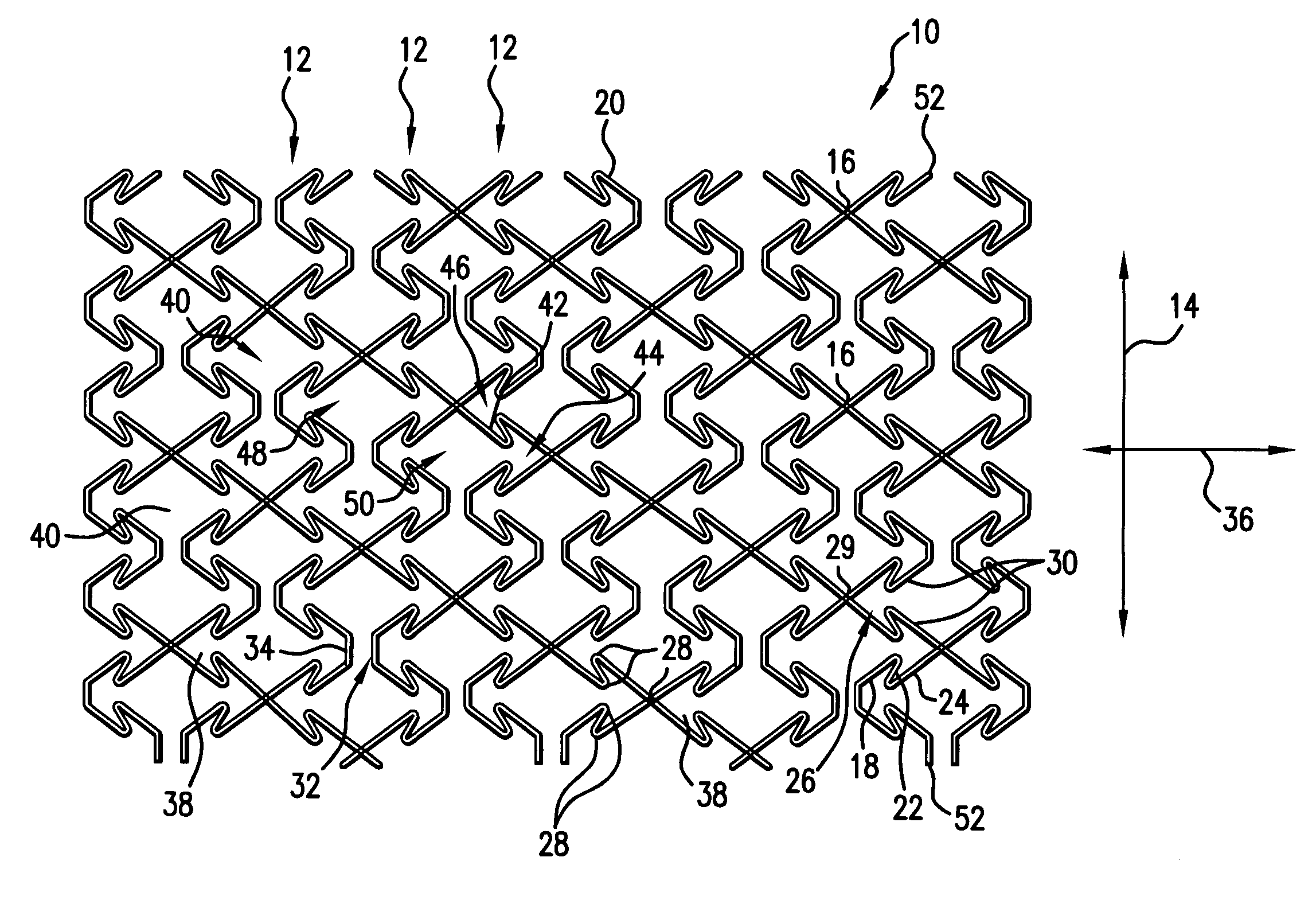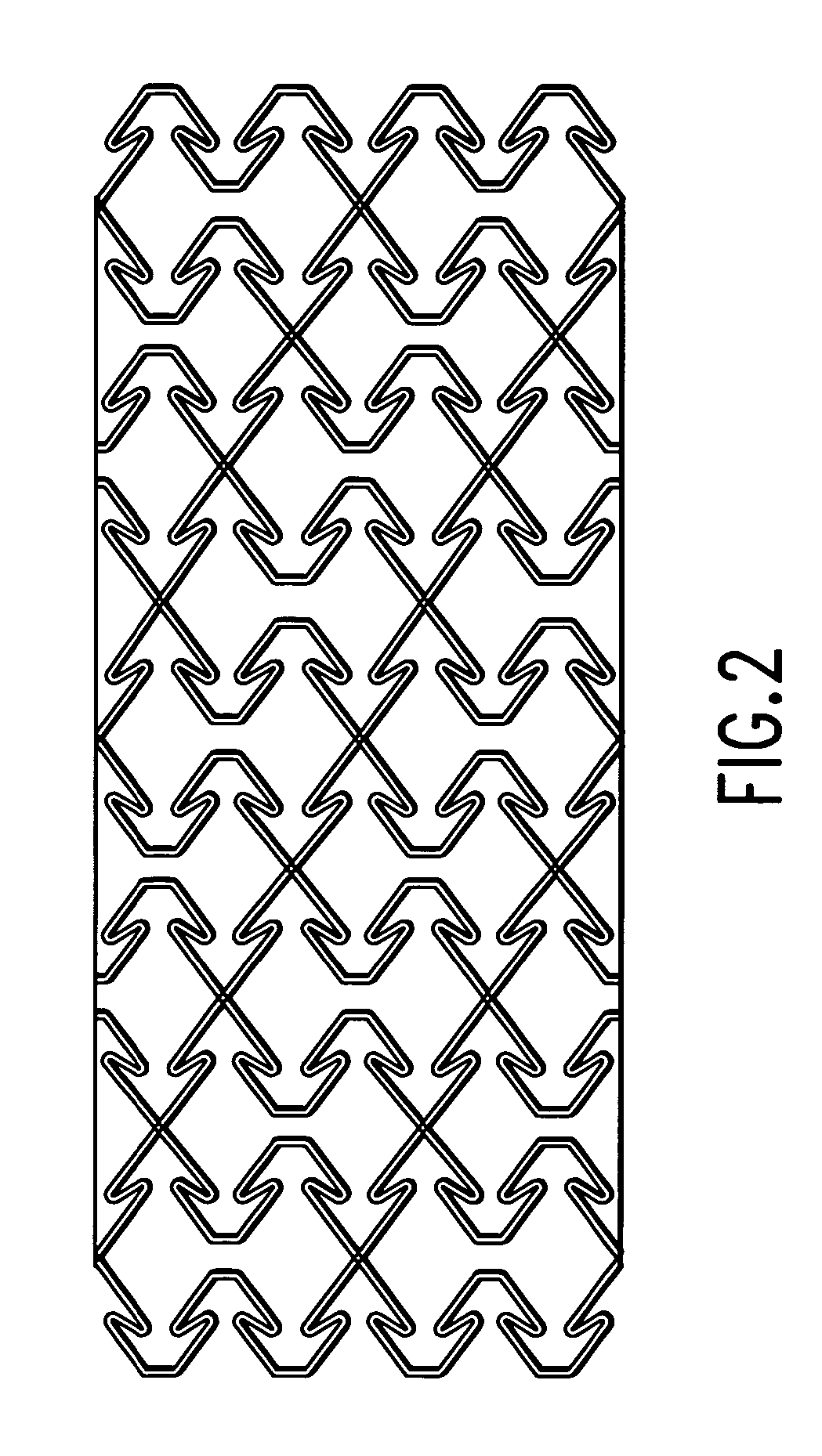Endoprosthesis for controlled contraction and expansion
a technology of endoprosthesis and expansion balloon, which is applied in the field of endoprosthesis, can solve the problems of limited deliverability performance, difficult access to the intended deployment site, and retention of the expansion balloon, and achieve the effect of reducing the risk of recurren
- Summary
- Abstract
- Description
- Claims
- Application Information
AI Technical Summary
Benefits of technology
Problems solved by technology
Method used
Image
Examples
embodiment 54
[0064]The preferred stent is substantially cylindrical, and the circumferential edges of the stent 10 are preferably continuous with each other. In an alternative embodiment, the stent is made of a coiled sheet, in which the lateral edges of the pattern are not affixed to each other and in which the annular elements 12 are open. The coiled sheet can be delivered in a small diameter, coiled state to the deployment site, with the opposing edges of the sheet preferably configured for engaging each other when the stent is expanded to the deployed position, to prevent collapse of the stent. For example, uneven lateral edges can be used on the opposite circumferential edges 56 to hook with each other to prevent collapse. FIG. 3 shows a coiled sheet embodiment 54, with saw tooth circumferential edges 56 to catch in interlocking engagement with opposing saw tooth circumferential edges 56 to prevent collapse of the sheet from the deployed position. In this manner, the coil sheet will both un...
embodiment 322
[0095]The annular element 312 shown in FIGS. 28 and 29 for purpose of illustration and not limitation has cells 314 that include expansive sections 316 fixed to contractile sections 318, preferably at hinge points 320. FIGS. 30 and 31 show another stent embodiment 322 with cells 324 that incorporate both expansive sections 326 and contractile sections 328 that are naturally biased opposite each other. In both of these embodiments, the expansive sections 316,326 preferably each have an elongated shape generally aligned in a longitudinal direction 330, and contractile sections 318,328 each have an S-shape or folded shape that extends generally in a circumferential direction 332. When moved from the contracted state to the expanded state, the expansive sections preferably expand circumferentially, and the contractile sections preferably expand circumferentially as well as longitudinally, with the S-shape uncoiling.
[0096]In the embodiment of FIGS. 30 and 31, the contractile sections 328...
PUM
 Login to View More
Login to View More Abstract
Description
Claims
Application Information
 Login to View More
Login to View More - R&D
- Intellectual Property
- Life Sciences
- Materials
- Tech Scout
- Unparalleled Data Quality
- Higher Quality Content
- 60% Fewer Hallucinations
Browse by: Latest US Patents, China's latest patents, Technical Efficacy Thesaurus, Application Domain, Technology Topic, Popular Technical Reports.
© 2025 PatSnap. All rights reserved.Legal|Privacy policy|Modern Slavery Act Transparency Statement|Sitemap|About US| Contact US: help@patsnap.com



